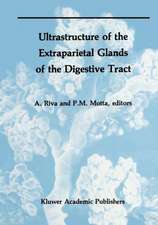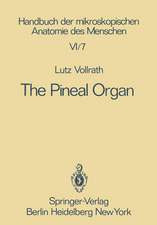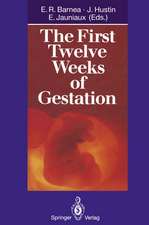Oxyradicals in Medical Biology: Advances in Molecular and Cell Biology, cartea 25
Editat de J.M. McCorden Limba Engleză Hardback – 23 apr 1998
Mother Nature, however, has a penchant for being able to make a silk purse from a sow's ear. If one is dealt a bad hand, one must simply make the best of it. After two decades of focusing on the destructive side of free radicals, the last few years have begun to reveal a new and finer perspective on free radical metabolism - a role in regulation of cellular function (see Schulze-Osthoff and Baeuerle, Chapter 2). Evidence from a number of sources suggests that an increase in the oxidative status of cell encourages that cell to grow and divide. Increasing the expression of mangnese superoxide dismutase can suppress the malignant phenotype of melanon cells (see Oberley and Oberley, Chapter 3). Oxidative stress beyond a certain poitosis (from the Greek, literally "to fall apart"). Is this suicide response an evolutionary fail-safe device to curtail tumorogenesis? Does oxidative stress-induced apoptosis account for the loss of immune cells in AIDS (see Flores and McCor Chapter 4)?
This volume attempts to present the spectrum of roles, both good and bad played by active oxygen species as understood at this point in the evolution of this field of free radical biology.
Preț: 933.61 lei
Preț vechi: 1278.92 lei
-27% Nou
Puncte Express: 1400
Preț estimativ în valută:
178.65€ • 186.99$ • 148.69£
178.65€ • 186.99$ • 148.69£
Carte tipărită la comandă
Livrare economică 31 martie-14 aprilie
Preluare comenzi: 021 569.72.76
Specificații
ISBN-13: 9780762303793
ISBN-10: 0762303794
Pagini: 188
Dimensiuni: 156 x 234 x 13 mm
Greutate: 0.46 kg
Editura: ELSEVIER SCIENCE
Seria Advances in Molecular and Cell Biology
ISBN-10: 0762303794
Pagini: 188
Dimensiuni: 156 x 234 x 13 mm
Greutate: 0.46 kg
Editura: ELSEVIER SCIENCE
Seria Advances in Molecular and Cell Biology
Cuprins
Contents. List of Contributors. Preface (J.M. McCord). An Overview of Oxyradicals in Medical Biology (I. Fridovich). Regulation of Gene Expression by Oxidative Stress (K. Schulze-Osthoff and P.A. Baeuerle). Oxyradicals and Malignant Transformation (L.W. Oberley and T.D. Oberley). Oxidative Stress and Human Immunodeficiency Virus (S.C. Flores and J.M. McCord). Neutrophils and Ischemic/Reperfusion Injury (N.R. Harris, and D.N. Granger). Oxyradicals and Acute Lung Injury (J.A. Leff, B.M. Hybertson, and J.E. Repine). Nitric Oxide Regulation of Superoxide and Peroxynitrite-Dependent Reactions (H. Rubbo and B.A. Freeman). Iron, Oxygen Radicals, and Disease (S.K. Nelson and J.M. McCord). Index.










































